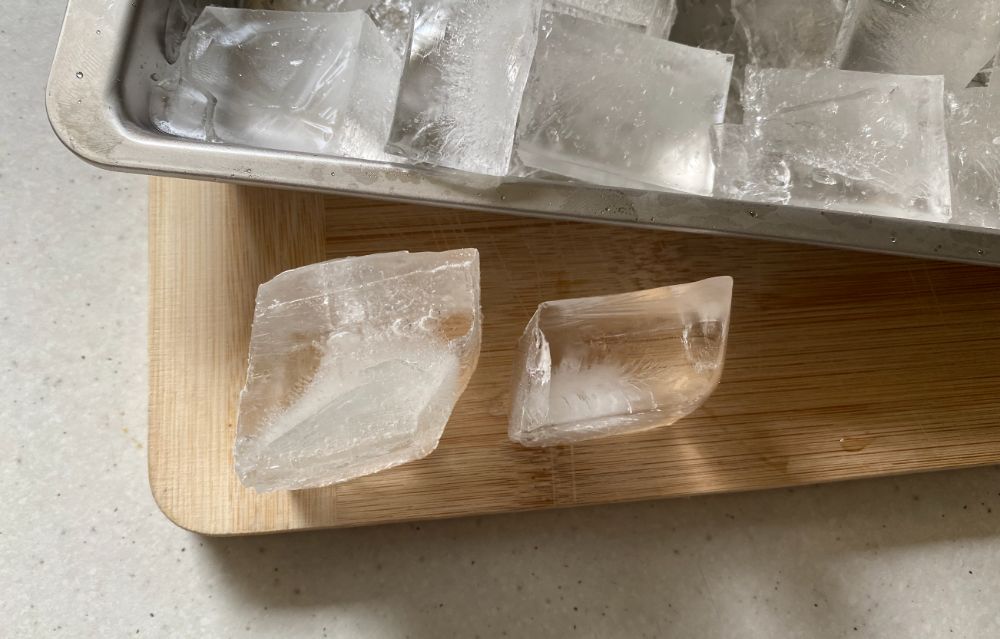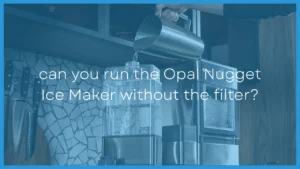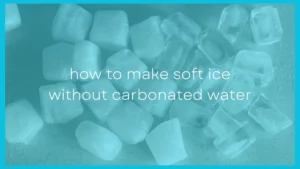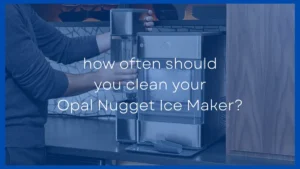It’s a common misconception that boiling water a couple of times before freezing will make clear ice cubes.
If you’ve tried this before yourself you may have noticed your ice cubes still came out cloudy and white. So why doesn’t boiling water make clear ice cubes and why do people say it does?
Boiling water does not make clear ice cubes like people suggest it does. Boiling water DOES release dissolved gasses making slightly clearer ice, but not completely clear ice. To make completely clear ice the ice must be frozen omnidirectionally – usually from the top-down or bottom-up.
To get clear ice you need to eliminate dissolved particles and impurities while also forcing the air out of the ice cube as the water freezes. This will result in perfectly clear ice cubes.
You need to do a lot more than just boil water and put it in a regular ice cube tray to get crystal clear ice.
In this article, we will describe why boiling water cannot make clear ice cubes and how you can actually make the clearest ice possible.
Why Doesn’t Boiling Water Make Clear Ice Cubes?
Pour yourself a glass of tap water and examine it closely. It will mostly look clean and clear but actually at room temperature water contains dissolved gasses from the atmosphere.
You can’t see them because they are dissolved in the water but when you go to freeze the water these gasses can get trapped between the ice making your ice cubes cloudy and not clear.
Water acts as a better solvent at a higher temperature than at a lower temperature. When water is placed in the freezer and its temperature drops the dissolved gasses try to escape from the water forming air bubbles.
Because ice cubes freeze from the outside in these air bubbles freeze and get stuck in the center of your ice cubes making them appear white and cloudy.
By boiling the water first most of these dissolved gasses escape out. When there are fewer gasses in the water then the ice cubes you make from this water will come out clearer with a less cloudy center. But unless you freeze them omni-directionally they will not come out completely transparent.
Getting entirely clear cubes of ice is only possible through omni-directional freezing. This is where the water freezes from the top down or the bottom up.
Below you can see a video where they boil water before freezing it and you can clearly see that the ice cubes do NOT come out clear:
What Happens If You Boil Water First Then Freeze It?
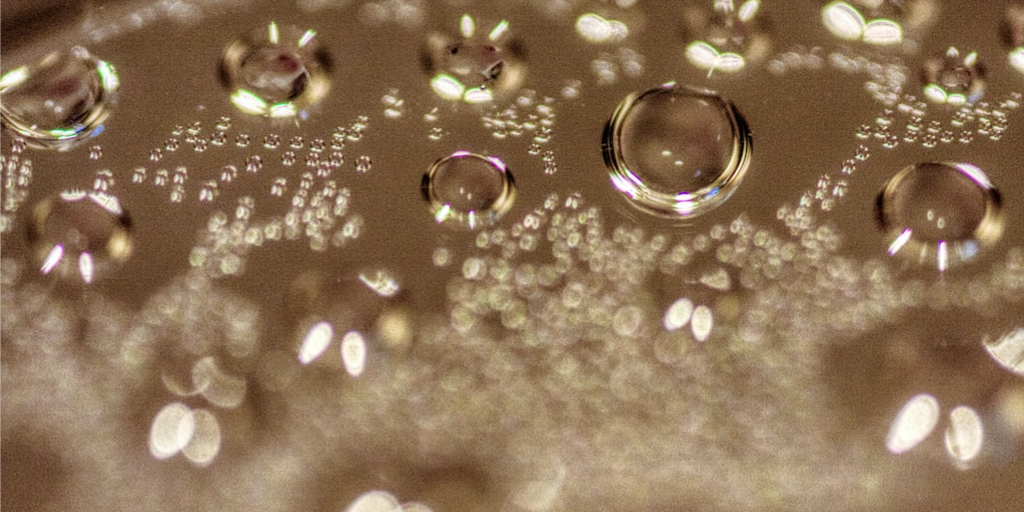
No matter how much you boil the water you’ll still end up with some cloudiness in the ice cubes.
The science behind clear ice cubes vs cloudy ice cubes is fascinating. By understanding the process you will be able to easily and consistently create clearer ice cubes.
Remember those light dispersion lessons from the physics class? Trapped air bubbles frozen in the middle of ice cubes disperse the light in all different directions. This makes your ice cubes appear all cloudy.
Although boiling the water removes some dissolved gasses, it doesn’t eliminate them entirely. When they freeze into bubbles in the middle of your ice cube the light passing through them gets dispersed rather than traveling in a straight line, hence the ice cubes not being clear and see-through.
Boiling the water can help remove some unwanted particles so the ice cubes will have a less hazy center than regular water cubes. But clearly it’s not the solution to getting transparent ice.
Does Using Distilled Water Make Clearer Ice Cubes?
Another aspect that can contribute to getting more transparent ice cubes is using distilled or filtered water. Distilled water is essentially boiled water that has become steam and then condensed and collected in a separate container.
In this way, it can be purified from many of the contaminations which are the most significant contributing factors to cloudy ice cubes.
Distilled water can make more transparent ice cubes as it has fewer minerals but it still needs to be frozen omni-directionally just like boiled water does.
How To Actually Make Clear Ice Cubes Using Boiled Water
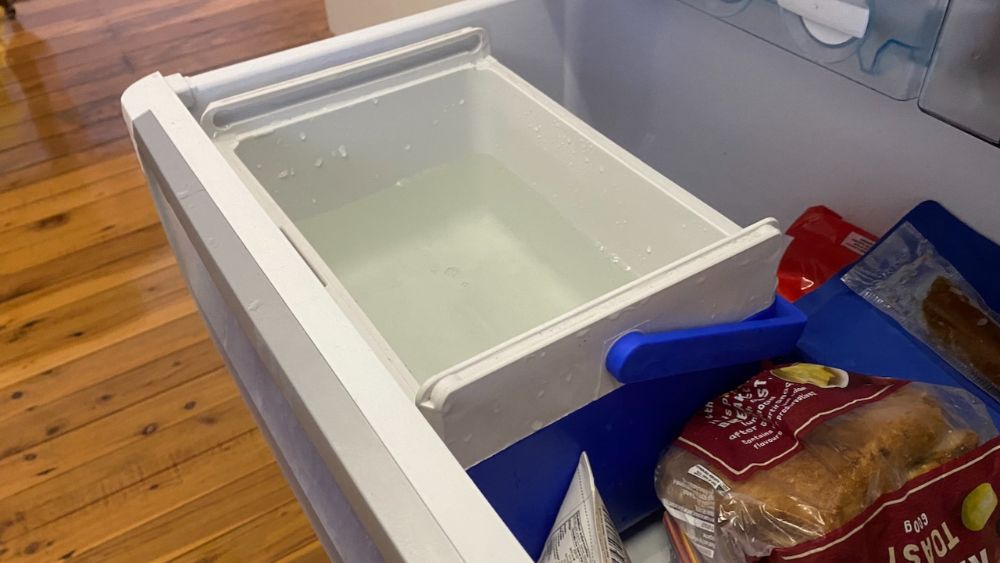
Ask an expert and they will probably tell you to go for “omni-directional freezing.” In this technique the water freezes from the top to the bottom gradually pushing the air and impurities towards the end of the container.
This way the ice on the top will be crystal clear just like you get in those fancy bars. You can take that top ice and cut it into amazingly clear ice cubes.
You can also use some clear ice-making molds and specialized freezers as they will automatically give you crystal clear ice of the desired shape.
Making clear ice at home is also possible using a cooler. Let’s look at the steps involved to create that crystal clear ice that can amaze your friends and family.
- Boil your water twice to release dissolved gasses then allow it to cool.
- Take out your cooler and fill it with cooled water.
- Put it in the freezer and wait for it to freeze. It can take a lot of time so if you want quick ice take the container out once the top part freezes. It will take approximately 24-48 hours for the water to completely freeze.
- Pull the cooler out and carefully remove the ice from it. You should do this in the sink to avoid any mess as the unfrozen water will flow out of the cooler.
- After that it’s time for some messy work. Gather up some tools such as a serrated knife, a mallet, and a cutting board.
- Firstly separate the clear top part from the hazy bottom part by cutting out using the serrated knife.
- If the ice you have is really big make a slit with the knife and hit it with the mallet. This will break the big chunk into smaller pieces.
- You can now use these transparent ice pieces and cut them into any shape and size you want.
- Voila! Crystal clear homemade ice! Throw them in a sealed storage bag and put them away in the freezer for future use.
Why Do The Impurities Congregate Toward The Ice Cube’s Center?
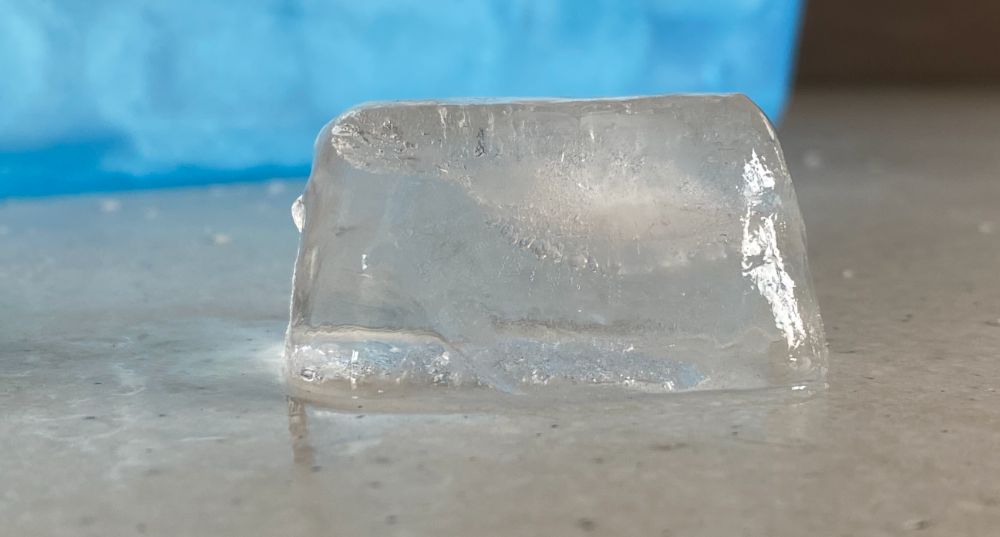
When ice freezes in a regular ice cube tray it freezes from the outside in. As it freezes dissolved gasses and minerals escape from the water.
Because the ice cube is already solid around its outside it creates a shell that doesn’t allow gasses to escape.
These gasses are slowly forced towards the center of the ice cube where they get stuck and are eventually frozen.
All these particles are practically unavoidable in regular water. Some professional ice machines or clear ice molds are designed to push air and impurities out of the ice.
The professional clear ice machines freeze the water slowly and in layers, so the air bubbles get enough time to move out of the water. Clear ice containers made from silicon are cheaper alternatives to easily getting transparent ice cubes.
They essentially use the directional freezing method where you get clear ice at the top while the bottom part remains all hazy and is discarded leaving only the crystal clear ice cubes that form on the top.
Summary
Hot boiling water doesn’t make clear ice cubes. It could help make slightly clearer ice than cold water ice cubes but the outcome would still be cloudy. It happens because:
- The clarity of ice cubes doesn’t depend upon the temperature of the water.
- Ice cubes come out hazy due to the impurities and air bubbles trapped inside them.
- Boiling the water DOES help by removing the dissolved gasses from the water but it cannot make completely clear ice cubes.
- Using distilled water with fewer impurities and freezing it omnidirectionally will result in crystal clear cubes.
- Omnidirectional freezing pushes the impurities and dissolved gasses to the bottom of the container and you get crystal clear ice on the top.

